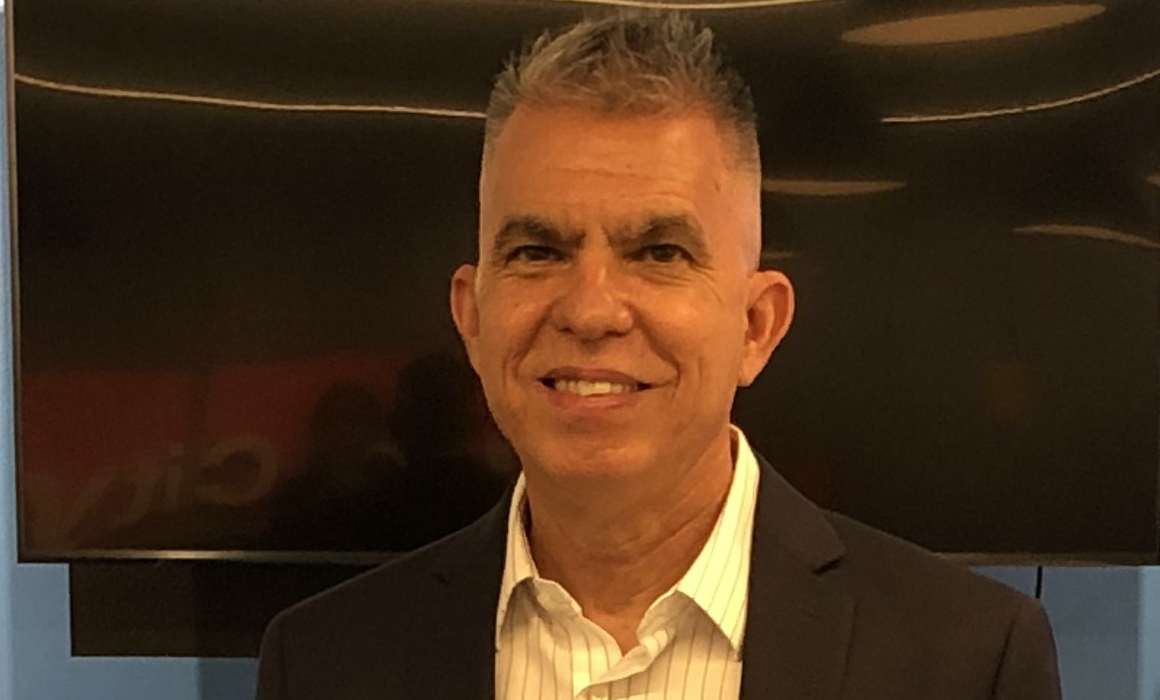
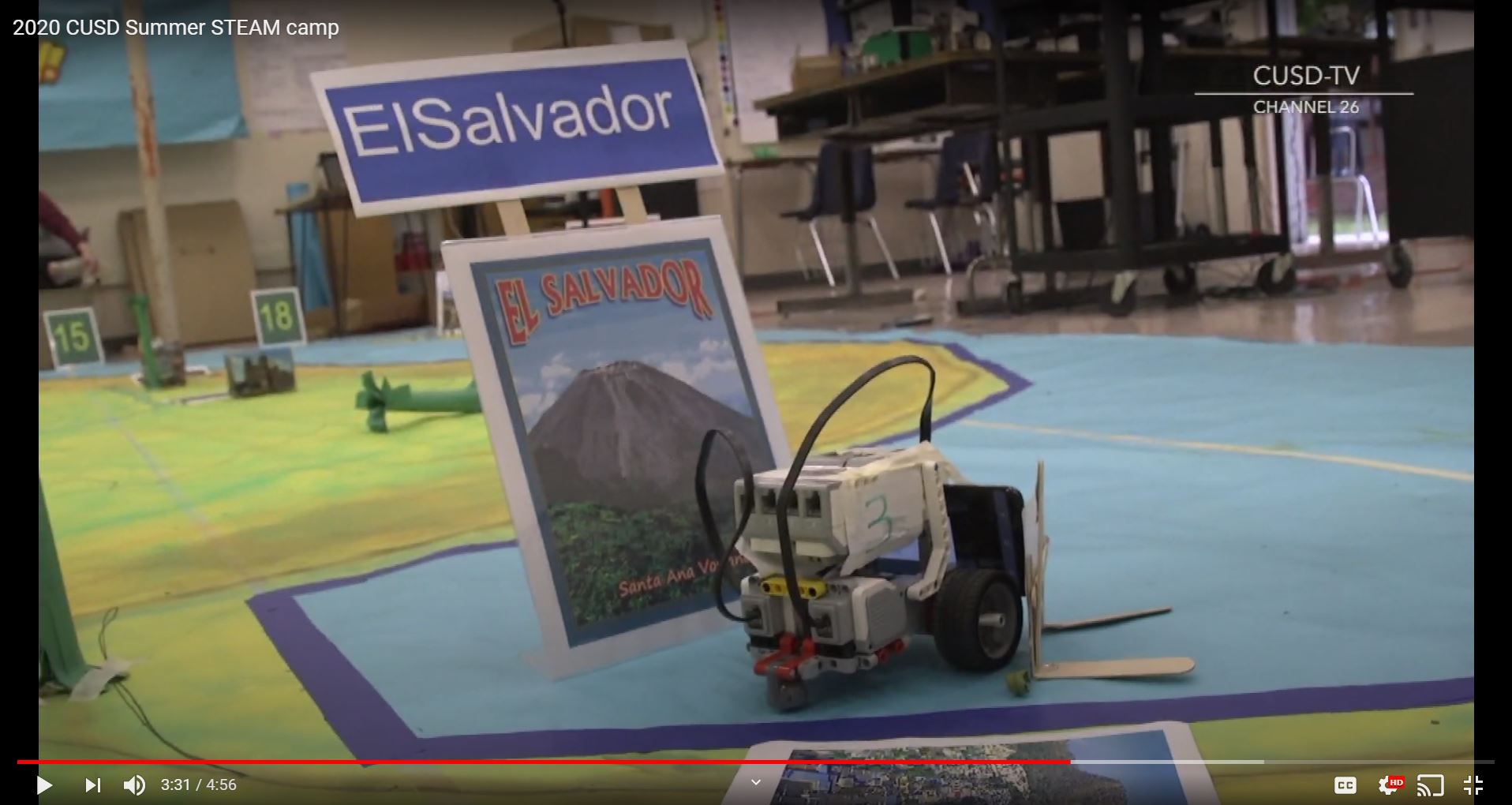
Innovator Jose Gonzalez’ students programmed robot cars remotely to ‘travel’ through Latin America.
Robots took a road trip throughout Latin America this summer, courtesy of a group of Compton students and their teacher, Jose Gonzales.
“I love that minority kids who are traditionally underrepresented in STEAM are so interested in using technology to help their communities.”
Well, technically, the robots explored various countries while rolling atop a large map on the floor of a classroom inside Bunche Middle School, controlled by students working remotely from home and connected on Zoom. Students had to research and answer questions about Latin American culture, geography and current events, and program their robots to journey forth based on the answers.
For example, students had to name a famous poet from Chile (Pablo Neruda), identify the longest mountain range in South America (the Andes), and visit countries for simulated COVID-related missions such as contact tracing in outbreak hotspots.
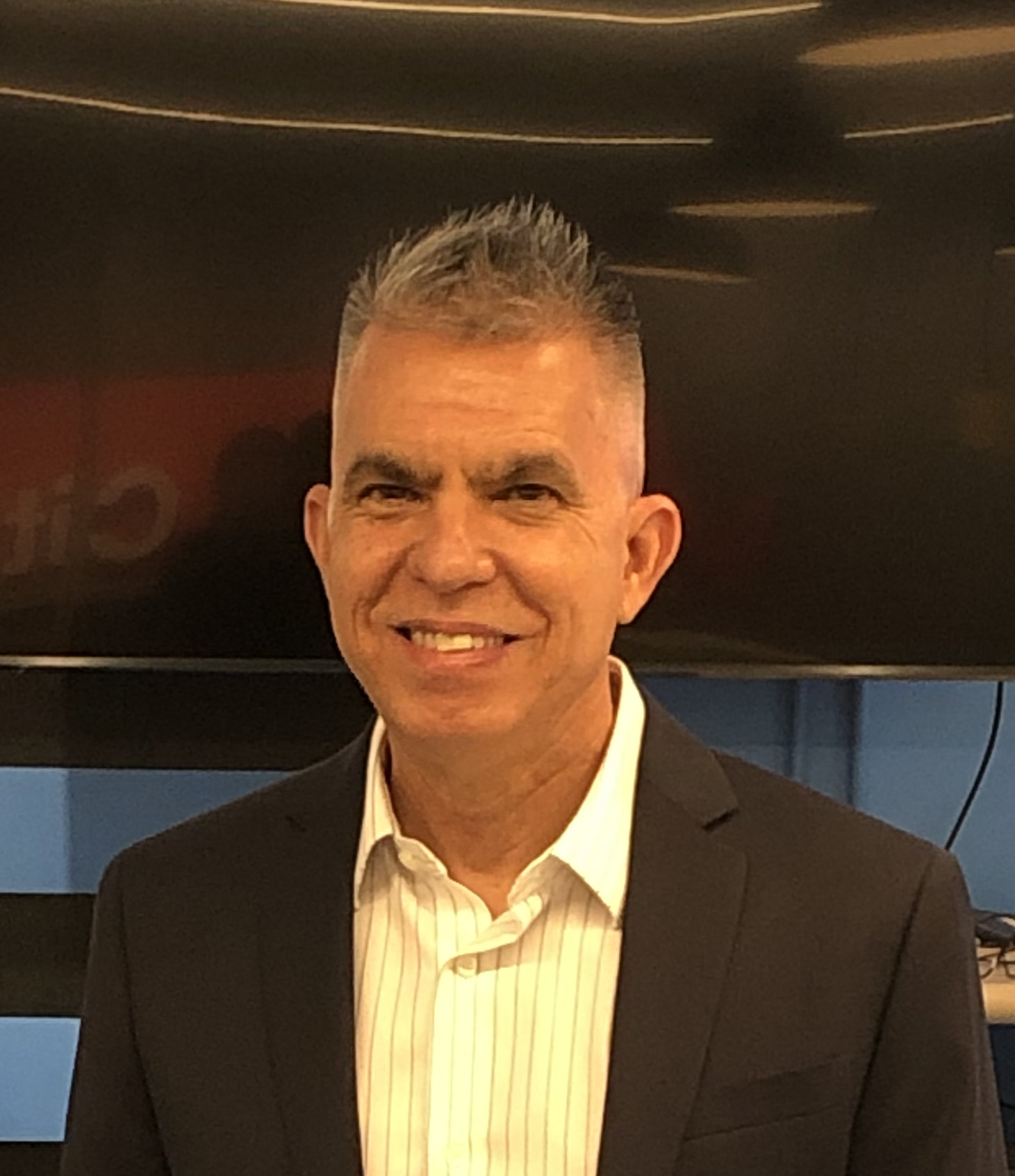
Jose Gonzalez
This is one example of how Gonzalez, a Compton Education Association member, is refusing to let the pandemic short-circuit projects students love. Since distance learning went into effect, he has worked from his empty classroom so students can remotely take advantage of the cool gadgetry there. In addition to Latin America, students have focused on COVID-related projects closer to home.
“We’ve received a lot of attention, including being featured on Good Morning America,” says Gonzales, who teaches STEAM (science, technology, engineering, art and math) at Davis Middle School in Compton, a community where many students face challenges. “I love that minority kids who are traditionally underrepresented in STEAM are so interested in using technology to help their communities.”
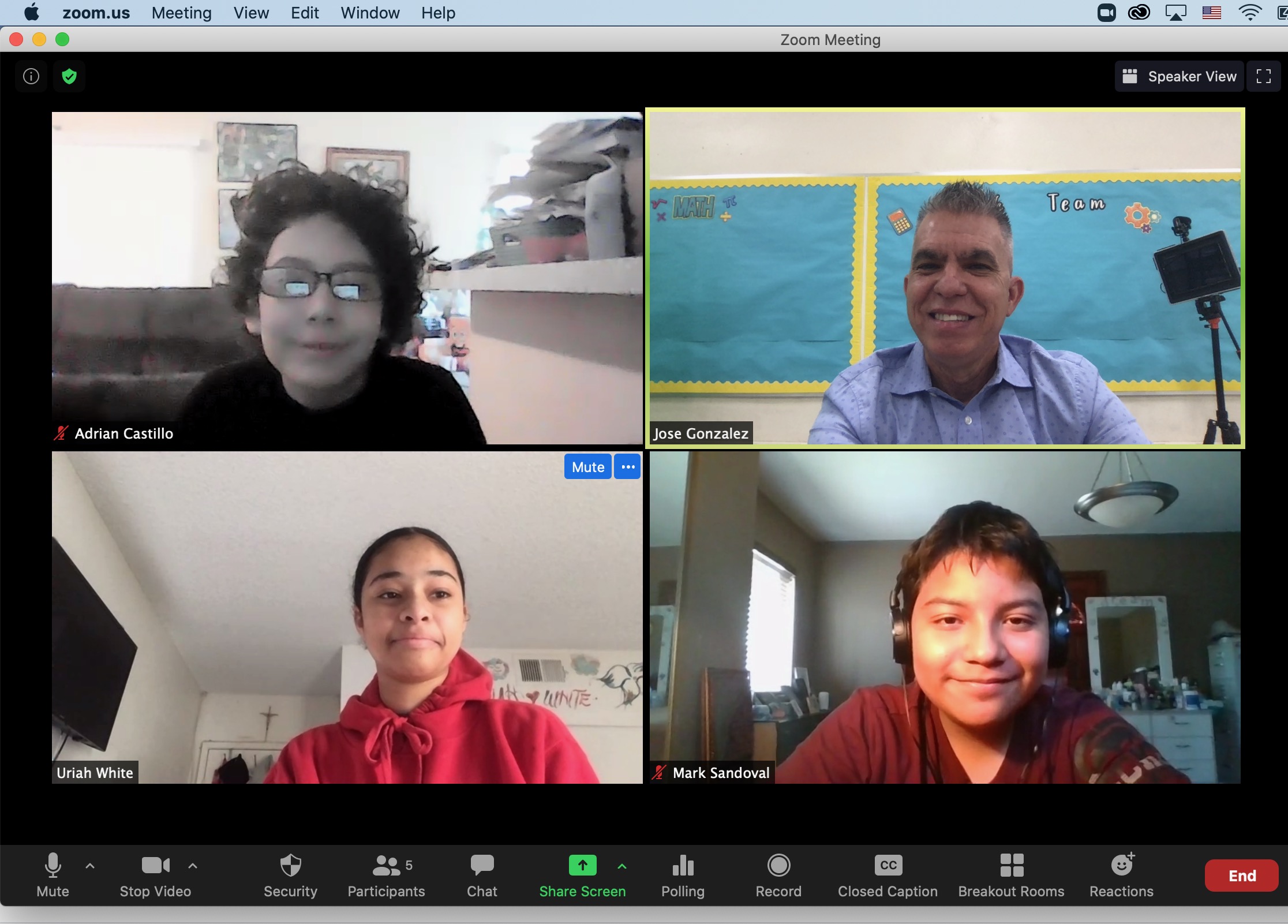
Jose Gonzalez (upper right) and students.
Five years ago, Gonzalez created a Tech Team at Bunche Middle School with a grant from GenYES — a nonprofit that empowers underserved students through technology. His team supported staff by taking apart PCs and building new ones, troubleshooting computer issues, connecting printers and LCD projectors, and creating workshops for students about cyberbullying.
Thanks to a grant from Verizon in 2017 that provided iPads for all students, staff and educational support, students transitioned to becoming innovators themselves. Projects included building a space plane that used a space simulator with real orbital dynamics; building a prototype rover to explore the surfaces of other worlds; building robots; creating virtual reality goggles that offer a tour of Mars; and using code to simulate space radar.
The Bunche “bunch” won local awards, placing third in the district’s annual STEAMFest competition for their Mars Habitat Exhibit, which included a hydroponics system that utilized live fish waste to fertilize plants in a closed system for providing food to future astronauts. Team Captain Yerenia Barrajas was recognized nationally by GenYES for her leadership. Members visited UC Berkeley and a famous film studio nearby.
Then the pandemic hit, and the team that met daily and most Saturdays at school could no longer meet in person.
Students quickly pivoted to address COVID-related problems in their community. Mark Sandoval, now in eighth grade, made an app sharing information on how to survive and stay healthy during the pandemic. Uriah White, also in eighth grade, created an app based on her own online research, sharing store locations where items in short supply, like toilet paper, could be found.
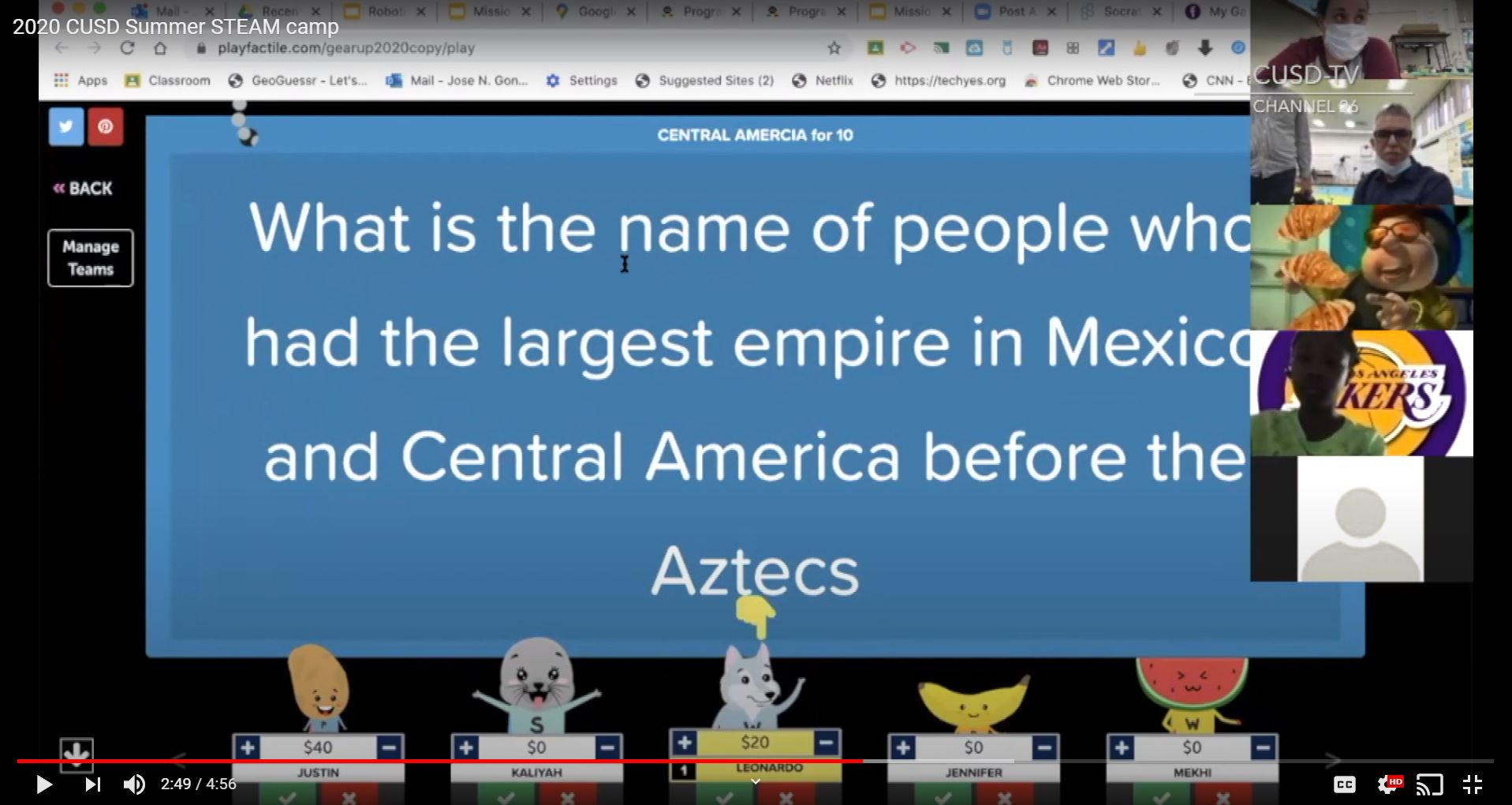
Gonzalez (upper right) had students learn geography, history and culture as they programmed and operated robot cars remotely.
Students made videos about what their lives were like in the pandemic, which Gonzalez edited into a presentation. They made videos of what their summer might look like without COVID and talked about what they missed the most. It made them feel better.
“I was in tears watching the videos,” says Gonzalez. “They were so honest about their feelings. They worried about their grandparents. They missed their peers. They were confined to spaces with lots of siblings. It was very emotional.”
Gonzalez, born in Cuba, is no stranger to hardships himself. He sought asylum in Canada as a child, joining his father, who had escaped on a boat years earlier. He grew up in tough neighborhoods and describes some of his teachers as “angels” who put him on the right path.
This year, he transferred to Davis Middle School to start a new Tech Team, which has 12 students and is growing. He is training teachers to use the new technology lab made possible by a 2020 Verizon grant. Four students transferred with him, including Sandoval and White. Distance learning continues, and so do exciting new projects.
Davis students are “building” 3D affordable housing in the CoSpaces Edu program and making videos addressing social issues including gun violence and gender stereotypes. Students taught parents how to use Zoom on their iPads, and Gonzalez filmed parents’ cooking shows, viewable on YouTube, which were very popular and even made the local news.
“We don’t get bored, because Mr. Gonzalez comes up with a lot of projects that keep us active,” says Sandoval. “He’s a very cool teacher.”